-
September 19, 2018 by Total Fire and Safety
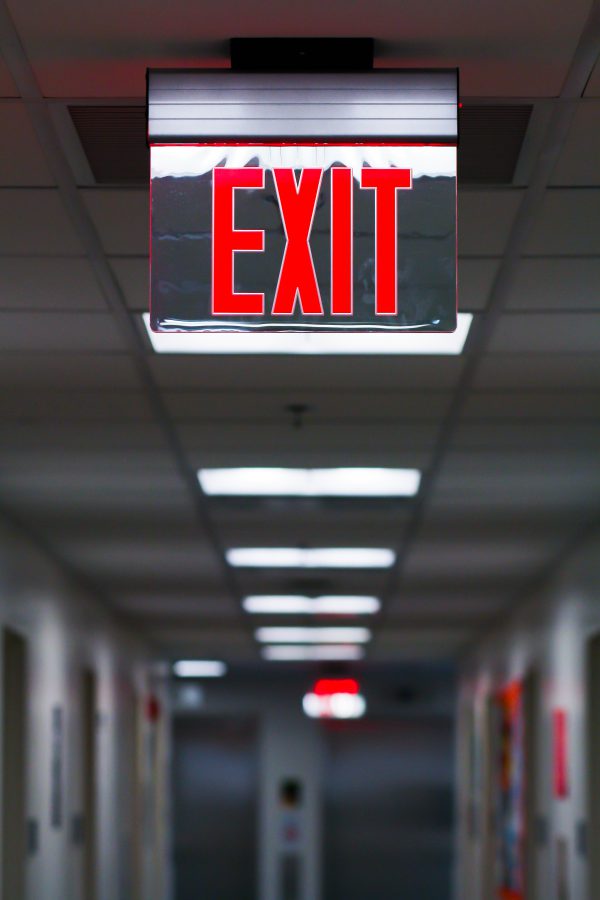
Campus fire safety is not likely a hot button issue with college students or parents when they first move on campus. But fires occur on college campuses more than parents and students realize. According to The Center for Campus Fire Safety, between 2000-2018, more than 92 fatal fires killed 132 people on college campuses, Greek housing, or off-campus housing within three miles of college housing. The NFPA reports that U.S. fire departments responded to an average of 3,870 fires in dormitories and Greek housing from 2009 to 2013. Cooking equipment accounts for 86 percent of the fires.
Most dormitories have specific rules and regulations in place to reduce the possibility of fire, but sometimes drugs and alcohol consumption can inhibit a student’s ability to recognize danger zones. It’s worth mentioning to your child that special care must be taken with the following items, even when they allowed by residence:
- Space heaters
- Candles
- Stovetops
- Cooking utensils
- Smoking
- Overloaded power strips
When you move your child in, you can help keep them safe by keeping fire safety in mind:
- Check for smoke alarms and fire sprinklers. These should be located in hallways, lobbies, bathrooms, bedrooms, etc.
- Look for a posted escape route. If there are no plans posted, make one.
- Check with school officials when and how often fire drills are planned. There should be fire drills on-campus, in Greek housing and off-campus housing.
- Keep all exits clear for a safe escape path.
- Do not use flame candles, opt for battery operated candles.
- Practice fire safety in the kitchen. Do not leave food cooking unattended and do not cook when tired or in a compromised state. Unplug appliances. Do not put out grease fires with water.
- Do not overload outlets.
- Turn off electronics and appliances, like computers, hair tools, etc. Hit the off button when leaving the room.
- Clean the lint trap from the dryer, before and after each use.
- Smoke outside! Do not dispose of cigarettes, etc. in the garbage.
Unfortunately, one of these potential fire hazards became real when a mother lost her daughter in a fire while she was attending Reed College near Portland, Oregon. Because of this tragedy, the victim’s mother partnered with the Portland Fire and Rescue to promote the “Zero Death Initiative.” The program aims to educate students, who are on their own for the first time, about fire safety.
Starting college is a big step into a new world for everyone but campus fire safety should not be lost in the fray. Take the precautionary measures now so your child can stay focused on the year ahead. Total Fire and Safety keeps residential buildings equipped and compliant with proper fire code regulations. To find out more about what we do, give us a call at 630-960-5060.
Category: Fire exits, Fire Extinguishers, Fire News, Fire Safety, Total Fire and Safety Tags: emergency exit, emergency exit lights, escape route, fire and safety equipment, fire drill, Fire Extinguisher, fire safety, Firesprinkler, safety, smoke alarms | Comments Off on Parent’s Guide to Campus Fire Safety
-
May 30, 2018 by Total Fire and Safety
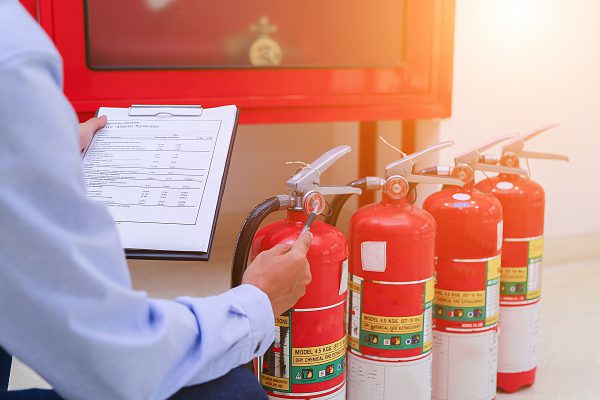
Most companies understand the mandate to have regular fire extinguisher inspections but many wonder why on earth a company could actually fail these inspections. After all, a fire extinguisher is rarely used so how can it need service?
Chances are you see a fire extinguisher every day, but how closely do you look at it? Even one dent in the tank can change the outcome. According to the NFPA, nearly 30 percent of fire extinguishers are not in proper working order. Total Fire and Safety’s twelve-point check can ensure your company’s compliance. However, there are five main reasons why companies fail a fire extinguisher inspection.
1. Unseen Damage– Corrosion or damage can occur over time in hard to see areas of the extinguisher, for example, rust within the tank. That is when a professional steps in and inspects the extinguisher inside and out. TFS will visually examine the extinguisher making sure it is free of dents, rust, or other hazards.
2. Potential Hose Blockage– Debris can clog the hose or deterioration of the O-rings can occur over time, rendering a fire extinguisher useless in an emergency. TFS will remove the hose completely to check for irregularities.
3. Possible Leaks– Whether large or small, a leak will cause the fire extinguisher to be inoperable. Anyone can check the pressure gauge to determine if there is a leak. However, if there is no pressure gauge, you will need a professional. TFS will confirm the compression in the tank.
4. Wear/Fading of Labels– Labels are vital when fighting a fire because they contain instructions on how to use the extinguisher. They also provide important information about the device’s maintenance history, which is needed by inspection professionals. Once your fire extinguisher inspection is complete, the labels will be updated, and an additional certification tag will be attached.
5. Recharging Needed– Once a fire extinguisher is used, even partially, it will need to be recharged immediately. If you fail to recharge the extinguisher, it will fail you in a fire.
Although these are common reasons companies fail fire extinguisher inspections, there are other possible hazards not listed. It is important to stay up-to-date with your fire extinguisher inspections. The NFPA requires inspection every month and maintenance every year by a professional. In addition, a stored pressure extinguisher requires internal maintenance every six years and a hydrostatic test every 12 years.
It takes a minute for a fire to spread and cause irreparable damage to your company—the same amount of time it takes to schedule a fire extinguisher inspection!
Total Fire and Safety can inspect your fire extinguishers to ensure they are unfailingly ready to fight fire at a moment’s notice. We also provide onsite training for your employees, including hands-on practice in the use of a fire extinguisher. Give us a call today at 630.960.5060.
Category: Business Safety, Fire code violation, Fire Equipment Inspections, Fire Extinguishers, Fire Extinguishers, Fire Safety, NFPA Compliance, Total Fire and Safety Tags: equipment, Extinguisher, fire and safety equipment, fire and safety needs, Fire Extinguisher, fire extinguisher inspections, fire safety, safety, Total Fire & Safety, Total Fire and Safety | Comments Off on Why Companies Fail Fire Extinguisher Inspections
-
March 21, 2018 by admin
Join us for the 2018 Fire Safety Symposium
at Total Fire & Safety!
Register below! Space is limited!
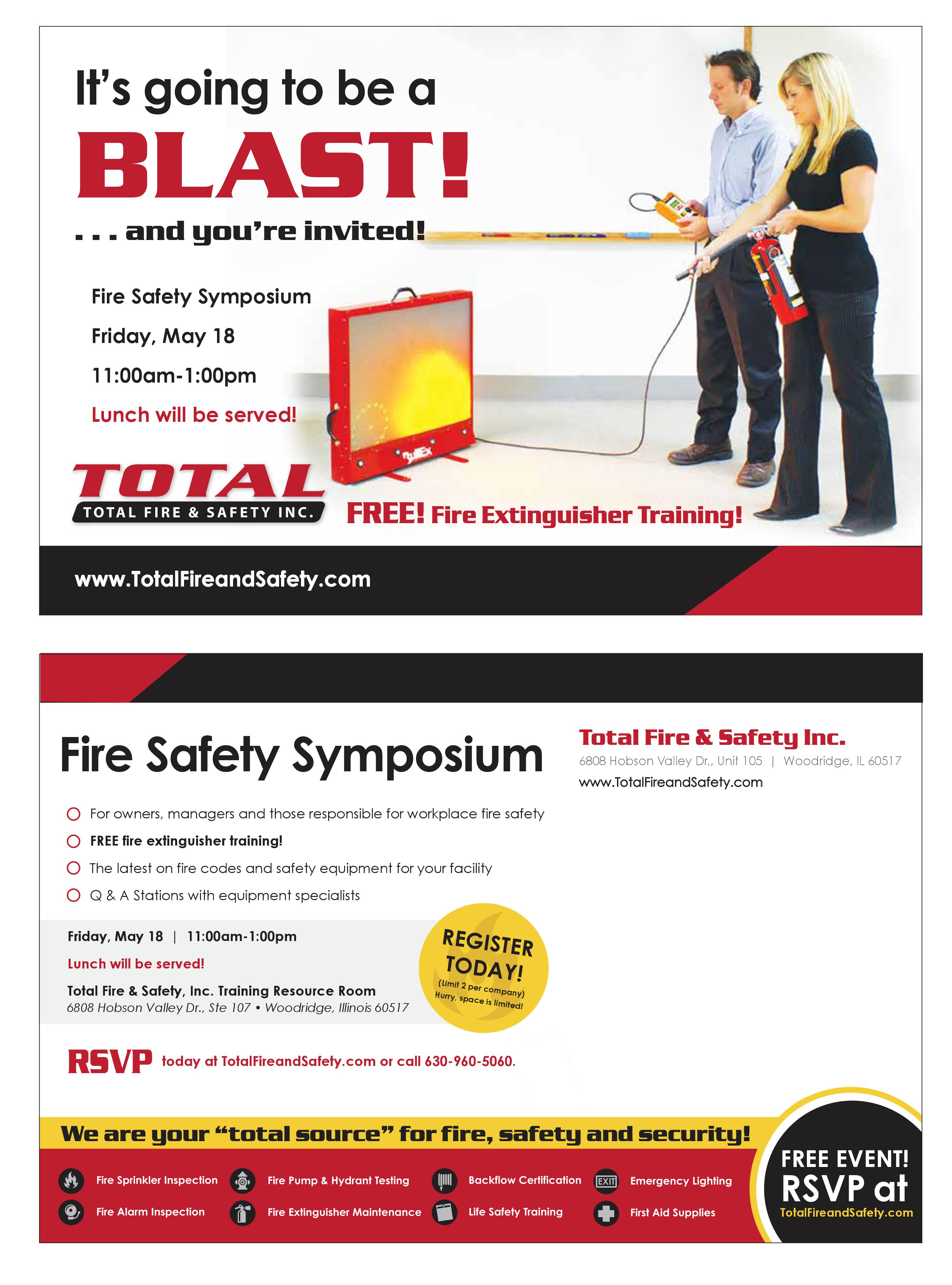
Category: Business Safety, Client Events, Fire Extinguishers, Fire Extinguishers, Fire News, Fire Safety Tags: commercial fire safety, employee training, fire and safety equipment, fire and safety solutions, Fire Extinguisher, fire safety, fireextinguisher, Fireextinguishertraining, Total Fire & Safety, Total Fire and Safety, training | Comments Off on Fire Safety Symposium
-
March 15, 2018 by Total Fire and Safety
 Nobody thinks much about emergency exit lights. But if the power suddenly goes out, smoke fills the room and you can’t see a foot in front of you, relying on the emergency lights may be your only means of escape. Nobody thinks much about emergency exit lights. But if the power suddenly goes out, smoke fills the room and you can’t see a foot in front of you, relying on the emergency lights may be your only means of escape.
Emergency exit lights are essential to safety in any dangerous situation. They can alarm someone in a fire, be the only source of light in the dark, and the key to safely exiting the building. Emergency exit lights are often overlooked and taken for granted, but take note of how many you come across every day. Do you realize how many requirements and regulations go into the installation and maintenance of one exit sign?
There are numerous agencies that govern emergency exit lighting and signs: OSHA (Occupational Safety and Health Administration), NFPA (National Fire Protection Administration, JCAHO (Joint Commission on Accreditation of Healthcare Organizations and the International Building Code and International Fire Code. Above all these agencies, the local authority is responsible for monitoring and enforcing building/fire codes.
According to OSHA, an exit route is defined as a continuous and unobstructed path of exit travel from any point within a workplace to a place of safety. There are three parts to an exit route:
- Exit access-part of the exit route that leads to an exit.
- Exit-part of the exit route that is separated from other areas and provides a safe means of travel to exit discharge.
- Exit discharge-part of the exit route that leads to directly outside or refuge area.
OSHA’s requirements for the lighting of these afore mentioned exit routes is covered under 1910.37(b). It states that each exit route must be sufficiently lighted so an employee with normal vision can see along the exit route and each exit must be clearly visible and marked by a sign reading “EXIT.” Additional information for OSHA requirements can be found at www.osha.gov.
The NFPA guidance for emergency exit lighting and signs can be found in the NFPA 101, Life Safety Code. The NFPA’s Life Safety Code provides information for placement, illumination, and visibility for exit signs.
- Placement of exit sign. Any exit signs must be located so that no point in an exit access area is more than the sign’s viewing distance, or 100 feet from the nearest sign.
- Visibility of exit signs-Every sign must be located and of such size, distinctive color and design that is visible and contrasts from the background of its placement. NFPA also states no decorations, furnishings, or equipment that impairs visibility of a sign shall be permitted. Nothing should be placed near an exit sign that distracts attention and inhibits visibility of an exit sign.
- Illumination of Exit Signs-The NFPA states all exit signs must be illuminated by a reliable light source and legible in normal and emergency exit lighting modes. There are two categories of illumination: external illumination, which comes from outside the exit sign and internal illumination, which comes from a source inside an exit sign.
According to the NFPA, emergency illumination must be provided for a minimum of 1.5 hours in the event of power outage. The emergency lighting must be illuminated not less than an average of one lumen per square foot. The maximum illumination at any point can be 40 times the minimum illumination. All emergency exit lighting must be able to provide lighting automatically when normal light is interrupted.
Many emergency exit lights are now using LED lights. The NFPA states that LED lights are longer lasting, provide better light and are most durable. In emergency situations, LED lights emit sufficient lighting and are most effective when placed properly. They are also most energy efficient, saving the building money.
According to the NFPA requirements for testing, there are three categories of emergency lights: traditional, self-testing, and computer base self-testing. A monthly activation test which involves having the lights illuminate for no less than 30 seconds and an annual test which keeps the lights illuminated for 1.5 hours, simulating a long-term emergency. Records of these test must be maintained for inspection.
Many regulations, codes, and considerations go into the signs and lights you see every day so it is important to have regular maintenance and testing of these lights. Total Fire and Safety has a knowledge team for inspecting emergency exit lighting. With regular maintenance and testing from Total Fire and Safety, you can be assured your emergency exit lighting is up to code and the safety of your employees/tenants is assured. Give us a call today 630-960-5060.
Category: Business Safety, Fire code violation, Fire Equipment Inspections, Fire exits, Fire News, Fire Safety, Health and Safety, LED Lighting, NFPA Compliance, Total Experience, Total Fire and Safety Tags: commercial fire protection, commercial fire safety, emergency exit lights, emergency lighting, fire and safety equipment, fire and safety needs, fire and safety solutions, fire safety in the news, fire safety solution, fire safety training, lifesafety, safety | Comments Off on Are You In the Dark About Emergency Exit Lights?
-
January 15, 2018 by Total Fire and Safety
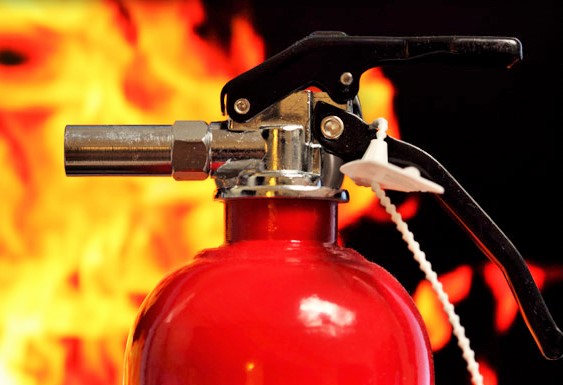
There’s no better way to ring in the new year and make sure your business is ready for any emergency 2018 brings than with proper fire extinguisher service at all of your locations. The National Fire Protection Association (NFPA) states that all portable fire extinguishers be inspected on a monthly basis and maintained by a licensed fire protection company on an annual basis. Yet each year nearly 25,000 fires cost companies over billions of dollars from not only recovery of property and premises but worker’s compensation filings and lawsuits from employees. Sometimes damages could have been reduced if employees had been aware of and actually used the fire extinguishers available.
Properly working fire extinguishers are a first line of defense against fires and can significantly minimize damage until help can arrive. Total Fire and Safety provides a thorough inspection that begins when we walk in the door, and continues throughout the building. Our fire extinguisher service contains our twelve-point check. What are the 12 points?
- Visual examination: We ensure the device is free of dents, rust, corrosion, and other related hazards.
- Test/Maintenance history: We review the test/maintenance history to ensure the internal system is active.
- Pressure Gauge: We check the pressure gauge to confirm the compression in the tank.
- Weight: We make sure the right amount of fluid is inside the tank.
- Discharge hose: We remove it and inspect for irregularities.
- Locking pin: We check for ease of removal in the event of a disaster.
- Handle/Lever: We ensure that the handle/pin will discharge smoothly.
- Clean Extinguisher: We degrease any pertinent areas.
- Inspection certification: We attach a safety flag and service tag to signify when service was completed.
- Extinguisher: We return it to the designated location.
- Mounting Bracket: We secure the extinguisher on its mount correctly.
- Hazard Application: We confirm you have the proper extinguisher type installed for your application.
Hand in hand with having extinguishers is teaching your employees how to use them. That’s why Total Fire & Safety also offers training courses for your employees/tenants so that in the case of an actual emergency, they will not hesitate to reach for the fire extinguisher.
Fire extinguishers are not only legally required but also give employees piece of mind, especially if they know how to use them. Employees appreciate working for a company that has their safety in mind. However, fire extinguisher service is definitely key.
If your fire extinguishers need service or are due for an inspection, please don’t hesitate to contact us at contact us at 630.960.5060.
Category: Fire Equipment Inspections, Fire Extinguishers, Fire Extinguishers, Fire Safety Tags: commercial fire safety, Extinguisher, fire and safety equipment, fire equipment inspection, Fire Extinguisher, fire extinguisher inspection, fire safety, fireextinguisher, Fireextinguishertraining | Comments Off on Is it time for Fire Extinguisher Service?
-
December 19, 2017 by Total Fire and Safety
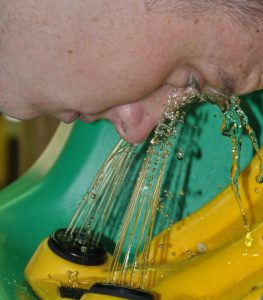 If you have hazardous chemicals onsite, you likely need an emergency eyewash station. One of the many vital services we provide at Total Fire and Safety is performing inspections on emergency showers and eye wash stations. Like any fire or safety equipment, routine inspections are a must to ensure your equipment will perform perfectly at a moment’s notice. In an emergency situation, nobody has the time troubleshoot an underperforming piece of equipment, let alone attempt to repair it. We’ve outlined the steps we take to ensure your eye wash station or emergency shower is ready in an emergency:
1. Ensure everything about the station’s location is correct. We first make sure the station is in an area it is needed. A working emergency eye wash station is of no use if it is not accessible to those who may need it. While showers tend to be fixed structures, eye wash stations can be either fixed or mobile. We also make sure the station is unobstructed and away from any source of debris or hazardous spray, which could compromise its usefulness.
2. Next, we inspect the exterior. We visually check every part of the station for any signs of damage, such as leaks, cracks, or other signs. Then, we check that all the hardware is intact and correctly in place, such as the caps, valves, and pull rods for showers. We then verify everything is at the correct height and that all signage is in its proper place before moving on to the next step.
3. After the visual inspection, we test the operation. For every eye wash station, we check the flow of water by gauging its height, volume, and response time from the moment of activation. For showers, we verify the water flows properly and onto the correct area.
4. For portable units, we empty and replace the water. This is to ensure the water in the reservoir is not only full, but clean and fresh. This step is also taken so that we can rinse out the inside as well as check for foreign debris or contaminants which could compromise the integrity of the eye wash station.
5. Finally, we clean everything and document the inspection. This entails wiping everything down with a rag and cleaning solution. Once this is done, we apply the inspection tag to the station to communicate to others when the inspection took place and what was performed. We also keep our own records of the inspection by filling out detailed information in an eyewash report.
In any facility that may contain hazardous substances, you may find an emergency shower or eye wash station idly waiting until needed. These units are not given much thought, but anyone who has ever used one in an emergency situation will vouch for its importance to stay in proper working order. If you have any questions or concerns about your emergency eye wash station or shower, or about the readiness of any of your fire safety equipment, please contact us.
Category: First Aid, Health and Safety, NFPA Compliance, Total Fire and Safety, Uncategorized Tags: fire and safety equipment, first aid, first aid supplies, Health and Safety, Total Fire & Safety | Comments Off on Are Your Emergency Eye Wash Stations Ready for Action?
-
October 31, 2017 by Total Fire and Safety
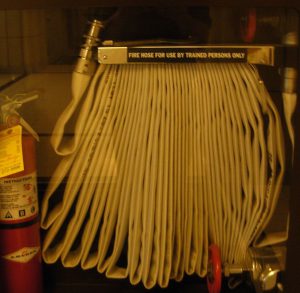 All fire safety equipment is subject to rigorous standards for safety and reliability, and fire hoses—the subject of NFPA 1962—are no exception. Despite looking like a relatively simple device, a fire hose is one of the most important lines of defense in firefighting. NFPA 1962 is an important revised standard for fire hoses; an outline which ensures that all hoses and their components will perform safely and as expected. At Total Fire and Safety, we take pride in ensuring that every fire hose meets all safety specifications. All fire safety equipment is subject to rigorous standards for safety and reliability, and fire hoses—the subject of NFPA 1962—are no exception. Despite looking like a relatively simple device, a fire hose is one of the most important lines of defense in firefighting. NFPA 1962 is an important revised standard for fire hoses; an outline which ensures that all hoses and their components will perform safely and as expected. At Total Fire and Safety, we take pride in ensuring that every fire hose meets all safety specifications.
NFPA 1962 Fire Hose Pre-Inspection
Before the inspection begins, we ensure the hose is easily accessible in all directions, and that there is a clear path to it. If the time comes to use a hose, there will be no time to clear obstructions. After this, we remove the cover from the hose and inspect the nozzle first, ensuring it opens and closes freely.
NFPA 1962 Inspection
First, we unravel the hose by the nozzle and find the tags and markings which indicate such information as the hose’s manufacture date and when it was last inspected. Once the hose is unraveled, we perform a visual inspection of the hose, inside and out, looking for any signs of wear or damage. This can be anything from cuts, to frays, to dry rotting, to contamination by a foreign substance. According to NFPA 1962, if there is any issue with the hose, we ensure it is either hydro tested or replaced. We also check the hose to ensure it is completely dry, inside and out. If we find evidence of water, we perform a hydro test to verify the hose is still up to code.
NFPA 1962 Post-Inspection
Once the inspection is complete, we carefully re-rack it to ensure it does not crack, fray, or wear prematurely over time. We also reconnect the hose to the standpipe and close the nozzle. We conclude the inspection by replacing the cover around the hose and documenting our procedure by placing an inspection tag around the standpipe.
At Total Fire and Safety, our inspectors are fully trained and up-to-date in all safety regulations—including NFPA 1962—to ensure your facility is safe and up to code. If you have any questions about your own facility’s fire preparedness, or if you are due for an inspection, don’t hesitate to contact us.
Category: Fire Hoses, Fire Safety, NFPA Compliance, Total Fire and Safety Tags: commercial fire safety, fire and safety equipment, Fire Hose Inspection, Fire Hoses, fire safety, NFPA, NFPA 1962, Total Fire & Safety | Comments Off on Are your Fire Hoses Compliant with NFPA?
-
September 4, 2017 by Total Fire and Safety
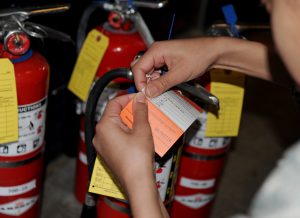 Walk into any building and you’re sure to see a fire extinguisher hanging somewhere on a wall, and although it doesn’t look it, that extinguisher requires maintenance. It does more than just sit idly until a dire situation calls for its immediate use. Most people overlook these crucial pieces of safety equipment—often to the point of not even knowing anything about it. Think about the fire extinguisher in your home or office—do you know if it is fully charged? Do you know if you will be able to depend on it to successfully extinguish a flame if the need arises? Walk into any building and you’re sure to see a fire extinguisher hanging somewhere on a wall, and although it doesn’t look it, that extinguisher requires maintenance. It does more than just sit idly until a dire situation calls for its immediate use. Most people overlook these crucial pieces of safety equipment—often to the point of not even knowing anything about it. Think about the fire extinguisher in your home or office—do you know if it is fully charged? Do you know if you will be able to depend on it to successfully extinguish a flame if the need arises?
This is why the National Fire Protection Association (NFPA) requires that that all portable fire extinguishers be inspected on a monthly basis (NFPA 10, Section 6.2.1) and maintained by a licensed fire protection company on an annual basis. (NFPA 10, Section 6.3.1)
We take fire extinguisher maintenance seriously at Total Fire and Safety, and perform rigorous inspections of fire safety equipment, including our 12-point portable fire extinguisher service check. People often ask us what goes into inspecting a fire extinguisher, so we’ve decided to share our technicians’ exhaustive process:
An inspection begins the moment we walk inside the door. At this point we already have all our tools and materials in hand to perform a proper inspection of the facility. To begin our process of fire extinguisher maintenance, we walk throughout the facility, ensuring all fire extinguishers are properly located and easily accessible. If there is not a clear path to an extinguisher, we may ask the customer to move any obstructions (We are not able to move any obstructions ourselves due to liability reasons).
We check that the extinguisher is charged and ensure it is the correct type for your facility’s hazards. For example, a kitchen requires a different type of extinguisher (or even a fire suppression system) than a server room. We verify that it will work for the type of fire which may occur in that area. In addition, we check the gauge and carefully weigh the extinguisher to ensure its pressure is in the proper range.
We perform a visual inspection and check such data as manufacture date and past fire extinguisher maintenance. We look for any signs of damage or any other reasons the extinguisher may need to be removed from service. We also check to see if maintenance is due. In some cases, extinguishers that have been dented have been tested and returned to service. We look for any markings to confirm this. One key aspect of proper fire extinguisher maintenance is communication between inspectors. All relevant information about the fire extinguisher’s maintenance history should be legible, so that any future inspectors know what we know.
We inspect and test the extinguisher’s hardware, such as the hose, pin, handle, and lever. We remove the hose from the extinguisher and ensure it is not clogged or damaged. If so, we attempt to remove the clog. If we cannot fully clear the hose or if it is damaged, we replace the hose entirely. We also ensure the pin, handle, and lever are not bent or damaged in any other way.
Finally, we check the bracket, clean the extinguisher, and place a new inspection tag on it. . Before hanging the extinguisher back up, we ensure the mounting bracket is the correct type for the extinguisher, and that it’s not damaged or incorrectly installed. We then wipe off any dirt, grime, etc., and make sure the gauge is legible. Our last step is to return the extinguisher to the bracket and apply a new inspection tag with the date we performed the inspection and the extinguisher type punched into it.
While fire extinguisher maintenance is a rather straightforward procedure, it is crucial that it is performed diligently and properly, as all these devices may be counted on to save lives at a moment’s notice. We strongly recommend that everyone’s fire extinguishers be inspected on a routine basis by qualified professionals. If you have any questions about the condition of your fire safety equipment, or if your facility is due for an inspection, please contact us at 630.960.5060.
Category: Fire Extinguishers, Fire Extinguishers, Fire Safety, Total Fire and Safety Tags: commercial fire safety, fire and safety equipment, fire and safety solutions, Fire Extinguisher, Total Fire & Safety | Comments Off on What is Fire Extinguisher Maintenance?
-
April 19, 2017 by Total Fire and Safety
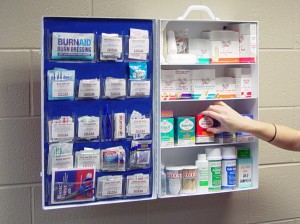
We cannot overstate the importance of first aid requirement for the workplace. If you read through the OSHA requirements for first aid kits and first aid training, and the ANSI minimum first aid equipment for businesses, you may notice that a lot of the details are left up to the business owner. That is because every business is different, and will have different risks depending on the equipment involved in the business. A simple office space might have a small, basic first aid kit, while a car mechanic would probably need a much more complex one. Here are five steps to help guide you through the process of determining what first aid kit and training your business and your employees need.
1. What are the most common injuries in your industry? Think about the equipment involved with your industry, and what kind of accidents can happen with that equipment. Make sure you satisfy the first aid requirement for workplace accidents to handle the most probable injuries within your specific business.
3. How close are you to the nearest hospital or medical center? In the event of an emergency, how long would it be until help arrived? If your business is in a remote location, you might need extra first aid materials to handle an emergency for a longer length of time.
4. How many employees do you have? Make sure there are enough first aid kits to handle an emergency where multiple people are injured. The more employees you have, the more first aid kits you should have.
5. Consider the layout of your workplace. Make first aid kits easy to get to, and easy to see. They must be clearly labeled, and all employees should know where they are. Also make sure that the first aid kits are accessible in the areas which are most prone to accidents, such as the kitchen in a restaurant.
There are a lot of options for both first aid kits and training. Make sure to think about restocking first aid kits and offering training to new employees. First aid requirements for workplace accidents can include portable kits or wall mounted kits, designed for indoor or outdoor use. For first aid training programs, make sure you go with a quality program that will teach your employees how to handle emergencies that are most likely to occur in your workplace. Cover the basics, and go beyond, to keep your employees healthy and safe.
If you have questions or concerns about first aid kit or training compliance, Total Fire and Safety is you one-stop source for all fire safety and first aid needs. Feel free to contact us at 630-960-5060.
Category: Uncategorized Tags: commerical first aid, commerical first aid kit, fire and safety equipment, fire and safety needs, fire safety, first aid, first aid kit, first aid safety, first aid supplies, safety, Total Fire & Safety | Comments Off on Five Questions to Ask to Assess Your First Aid Requirement for Workplace
-
December 14, 2016 by Total Fire and Safety
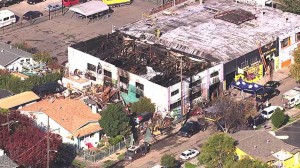 On December 2 in Oakland California, a deadly fire took 36 lives in a warehouse facility turned artist residence known as the Ghost Ship Artist Collective. It took four days for local firefighters to recover the scene. An absolute contributing factor? The lack of a sprinkler and fire alarm systems, blocked and inadequate fire exits and a lack of working fire extinguishers. On December 2 in Oakland California, a deadly fire took 36 lives in a warehouse facility turned artist residence known as the Ghost Ship Artist Collective. It took four days for local firefighters to recover the scene. An absolute contributing factor? The lack of a sprinkler and fire alarm systems, blocked and inadequate fire exits and a lack of working fire extinguishers.
In fact, the few extinguishers found among the bodies were inoperable. Officials say it is the highest number of fatalities in a structure fire in the U.S. in the last 13 years.
The tragedy shed negative light on the building owner, who refused to comply with fire codes and the state of the Oakland housing market, where people endured living in dangerous conditions since there was no other affordable alternative in the area. The city is also under scrutiny since the building had not been inspected for 30 years, and rightly should have been closed down.
But for those of us in fire safety, like Total Fire, the tragedy is a demonstration of the importance of our work, and how what we do saves lives.
The Looming Disaster
The Ghost Ship had been home to numerous fire hazards for some time and was no stranger to the authorities. The facility had been reported for tall weeds, mounds of garbage on the grounds, and illegal conduct of the community within, even though the space was not meant for residential use. The cause of the fire is still under investigation but at first, an old refrigerator was thought to be the cause.
The interior of the building was a chaotic mixture of improper electrical wiring and makeshift staircases, stacks of wood, furniture and other junk scattered around and wooden structures in progress. The fire started on the first floor, and people trying to evacuate had to weave through the inside clutter and climb a rickety, tight staircase to get out. People on the second floor were trapped by smoke and flames.
Many of the bodies were found as they were in their last moments–holding and hugging each other in fear.
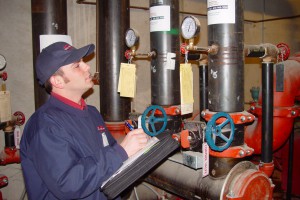
At Total Fire & Safety, we truly believe we do something more than just come to work, collect a pay check and go home. We play an important role in keeping our community safe!
Steven Holowka, our fire alarm division manager, puts it this way: “I tell my team to take the mindset that every building we take care of has someone you love in there. Would you want your loved ones being in a building that wasn’t properly taken care of? Would you feel okay if you one of your loved ones died in a building that wasn’t properly maintained?”
In the case of the Oakland tragedy, an inspection attempt was made as recently as last month when a code enforcement officer responded to complaints about piles of garbage. No one came to the door and the Oakland inspectors are not allowed to gain access to a building without permission.
The blaze started during a rave dance party, and the facility was not equipped or zoned for such a gathering. NFPA reminds us that in the case of nightclubs, theaters and auditoriums where large numbers of people gather, fires are the most deadly when the proper features and systems are not in place.
For theaters, night clubs, venues, etc. NFPA codes call for a considerable number of safety systems and features to be present for these structures, not just a single safety system or feature.
Saving Lives, a System at a Time
When building owners take shortcuts in service, look for the cheapest option or have the mindset that a fire like this could never happen to them, the consequences can be dire. That’s why we make sure we are doing our part in taking care of our customers and ensure that the systems they have onsite are adequate for their needs.
Our entire team, including our administrative employees, field technicians, managers and even our owner believes that it is our responsibility to do our job 100% because in the end we are protecting what matters most–people’s lives.
When we arrive at a facility we..
- TEST and INSPECT to make sure everything is in working order
- PROVIDE REPAIR/INSTALL SERVICE so everything is done correctly and ready to activate in an emergency
- and VERIFY that everything is up to code for the customer.
The fire at the Ghost Ship will rank among the Rhode Island Nightclub fire of 2003 and the Queen of Angels fire from 1958 as tragedies that could have been prevented or lessened considerably had the right life safety systems been in place.
As fire safety systems continue to improve, Jim Pauley of the NFPA warns that “we can’t be complacent just because numbers have gotten better.” It’s important that everyone responsible for the safety of those inside a facility have it properly inspected with well maintained and fully operational fire safety systems in place. Do you?
If you are unsure of whether your building is up to code, please don’t hesitate to contact us at Total Fire & Safety. We take our jobs seriously because we know what we do saves lives!
Category: Fire Alarm Monitoring, Fire code violation, Fire exits, Fire Extinguishers, Fire Extinguishers, Fire News, Fire Safety, Sprinkler Systems, Total Fire and Safety, Uncategorized Tags: fire and safety equipment, Fire Extinguisher, fire news, fire safety in the news, firesprinklerinspections, Ghost ship fire, importance of fire safety | Comments Off on The Ghost Ship Fire: 36 Lives Lost From Lack of Fire Safety Systems
|

|
|
|
|
|
|

 Facebook
Facebook
 Instagram
Instagram
 LinkedIn
LinkedIn


 Nobody thinks much about
Nobody thinks much about 

 All fire safety equipment is subject to rigorous standards for safety and reliability, and fire hoses—the subject of NFPA 1962—are no exception. Despite looking like a relatively simple device, a fire hose is one of the most important lines of defense in firefighting. NFPA 1962 is an important revised
All fire safety equipment is subject to rigorous standards for safety and reliability, and fire hoses—the subject of NFPA 1962—are no exception. Despite looking like a relatively simple device, a fire hose is one of the most important lines of defense in firefighting. NFPA 1962 is an important revised 



